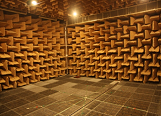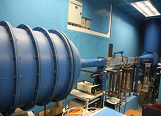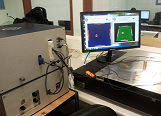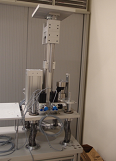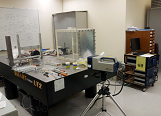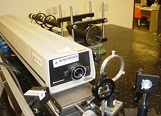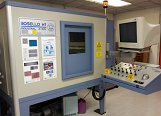Major aims are to foster close collaborations and build up better synergy in sound and vibration research through a research network including the Hong Kong Polytechnic University, overseas research institutions, public service corporations, local industry and governmental departments; and to assist/influence government noise control policy and to enhance the competitive edges of HK in acoustical products/designs through active technology transfer.
Targeting a leading position in research in relevant areas in the world, the research activities in the Consortium cover the whole spectrum of both fundamental and applied noise and vibration research, e.g., environmental noise, computational acoustics, aeroacoustics, flow-induced vibration and noise, structural vibration, structural health monitoring and damage detection, vibro-acoustics and active control. For convenience, the major research activities in the Consortium can be summarized in an alphabetic manner as
- Active Control of Vibration and Noise
- Building Acoustics
- Computational Acoustics
- Damage Detection and Structural Health Monitoring
- Environmental Noise
- Flow-induced Vibration and Noise
- General Acoustics
During the past few years has made collective efforts to be excellent in research and consultancies, Fruitful achievements have been well recognized by its peers, partially reflected its more than 300 SCI journal publications, more than 50 funds and grants from different governmental agencies, and more than 100 consultancy projects from industry.
The CSVR is established to create and develop a critical mass in the fundamental and applied research in the field of sound and vibration. The specific objectives of CSVR are:
- To carry out high-quality research and development to meet the industrial, commercial and community needs of the society;
- To foster close collaborations and build up better synergy in sound and vibration research through a research network including the Hong Kong Polytechnic University, overseas research institutions, public service corporations, local industry and governmental departments;
- To provide professional services to the government/industry/community in solving problems related to sound, vibration, control, structural integrity and health monitoring through carrying out consulting projects, arrangement of technical workshops and seminars, and development of engineering and scientific devices/systems/strategies;
- To assist/influence government noise control policy and to enhance the competitive edges of HK in acoustical products/designs through active technology transfer;
- To underpin graduate/undergraduate teachings with knowledge created from research and development works.
Members of CSVR maintain very good long-term collaboration in research and academic activities with other departments of PolyU, as well as other universities and institutions, both local and overseas, for example:
- University of Southampton, UK
- INSA de Lyon, France
- University of New South Wales, Canberra, Australia
- Cambridge University, UK
- Wayne State University, USA
- Tong Ji University, China
- Xi’an Jiaotong University, China
- Hohai University, China
- Korea Advanced Institute of Science and Technology, Republic of Korea
- The Ohio State University
- University of South Carolina, Columbia, USA
- Polish Academy of Sciences
- University of Sheffield, UK
- AGH-University of Science and Technology, Poland
- Nanjing University of Science and Technology, China
- Shanghai Jiaotong University, China
- Northwestern Polytechnical University, China
- GRF Project: Propagation of Noise in Congested High-rise Urbanized City, Research Grant Council, (SK Tang (PI) and J Kang).
- ITF Project: Compact Plate Silencer for Air Conditioning and Ventilation System, Innovation and Technology Commission, (Y.S. Choy (PI) and K.T. Lau).
- ITF Project: Innovative Design of Compartmental Silencer, Innovation and Technology Commission (UIM/194/ZP18), (Y.S. Choy (PI) and R.C.K. Leung).
- GRF Project: Nonlinear Aeroacoustic-Structure Interaction of Finite Periodically Stiffened Flexible Panels Loaded with Unsteady Flow, Research Grant Council, (RCK Leung (PI)).
- France/HK Joint Research Scheme: Noise Transmission through Double-walled Structures: Modeling, Control and Applications, RGC Joint Research Scheme, (L Cheng (PI)).
- GRF Project: Vibroacoustic Analyses and Design of Cavity Backed Micro-perforated Panel Absorbers for Environmental Noise Abatement, Research Grant Council, (L Cheng(PI) and J.Pan).
- GRF Project: Damage Identification and Repair of Composite Panels using Modal Power Flow Analysis, Research Grant Council, (WO Wong (PI) and L Cheng).
- GRF Project: Development of a Semi-active Control Method with a Single Adaptive Helmholtz Resonator for the Reduction of Transmission Noise in an Air Flow Duct, Research Grant Council, (CM Mak (PI) and J Yang (IOA,CAS)).
- Environment and Conservation Fund: Green Features for Improvement of Air Quality in Buildings, Environmental Protection Department, (CM Mak (PI)).
- GRF Project: Modeling, Estimation and Analysis of Complex Nonlinear Systems, Research Grant Council, (XJ Jing (PI) and L Cheng).
- GRF Project: Passive Control of Train-Tunnel Interaction Aeroacoustics in High-Speed Railway, Research Grant Council, (RCK Leung (PI)).
- GRF Project: Aeroacoustics of Helmholtz resonators and its control, Research Grant Council, (SK Tang (PI) and RMC So).
- GRF Project: Model-free Multilevel Identification of Multi-damage (3M) in Engineering Structures and Assets Using A Hierarchical Sensor Network-based Signal Fusion, Research Grant Council, (Z Su (PI) and L Cheng).
- ITF Project: Online Health Diagnosis and Prognosis (Online-HD&P) for Train Structures Using A Large-scale Diagnostic Sensor Network, Innovation and Technology Commission, (Z Su (PI) and L Cheng).
- ITF Project: Design of High Noise Isolation Windows, Innovation and Technology Commission, (L Cheng (PI) and Z Su).
The CSVR benefits from its modern testing facilities including a full anechoic chamber and the most up-to-date equipment, such as
|
1. Anechoic Chamber |
2. Acoustic Wind Tunnel |
|
3. Online Structural Health Monitoring System and Active Sensor Network |
4. Magneto-rheological Fluid Embedded Pneumatic Vibration Isolator |
|
5. Laser Doppler Vibrometer |
6. High-performance Computing Cluster |
|
7. Electronic Speckle Pattern Interferometry (ESPI) |
8. BOSELLO X-RAY SRE90 MAN |





